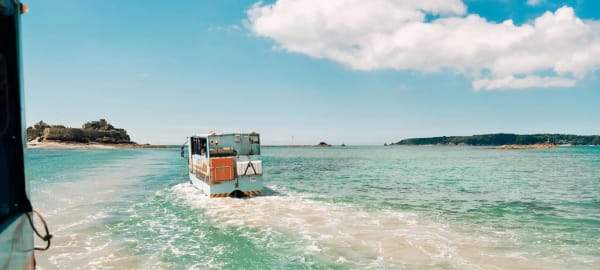
Seymour Tower was built in 1782 on the rocky outcrop, almost two miles off the south-east coast of Jersey, known as L’Avarison Islet following the Battle of Jersey in 1781. It was one of 30 coastal towers proposed by Sir Henry Seymour Conway when he was appointed Governor of Jersey. The islet provided a secure base and a practical location for early warning of any impending attack.
In 1781, whilst the chain of coastal defence towers was still under construction (with only four completed) a French invasion force led by Baron de Rullecourt landed at La Rocque and marched on St Helier, only to end in failure. The invasion attempt spurred the construction of Seymour Tower the following year. Unusually, Seymour Tower is square instead of the traditional round design and made from Jersey granite and is only one of three towers that have a gun battery at the base. Once the Tower was built, it was mostly used as a signal point for Mont Orgueil further north along the bay.
In a letter on 16 May 1809, Lieutenant Governor of Jersey ,General Don wrote about the Tower. “The Tower is situated on the right flank of Grouville Bay, two miles in the sea from high water mark, it commands the entrance into the Bay and is seen by all the sentries posted along the shore from Mont Orgueil Castle to Rocque Platte”.“It was necessary to communicate by signals between the shore and the Tower and, for the purpose of giving notice to the posts that ‘all was well’, lights were ordered to be shown towards the Bay every half hour, on seeing of which the sentries in the above mentioned line passed the word ‘All’s well’.”
A memorandum from Col. Le Couter in 1860 deemed Seymour Tower and Icho Tower (further south) were to be abandoned, with long-range guns set onshore at La Rocque point. Both Towers were unused for many years until the States of Jersey purchased Seymour Tower in 1923 for £120 and it was later leased to private tenants. Jersey Heritage took on the property in 2006 to be used as basic self-catering accommodation.




